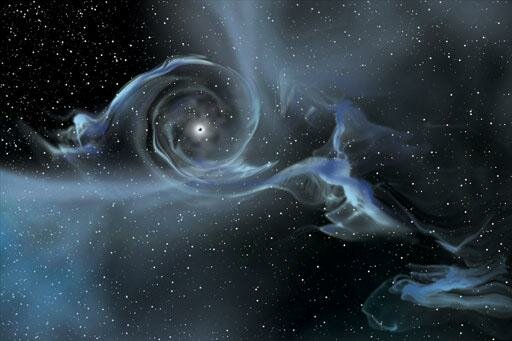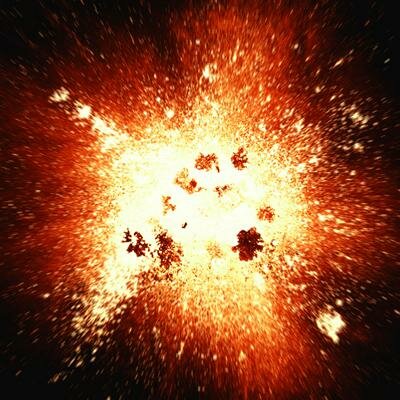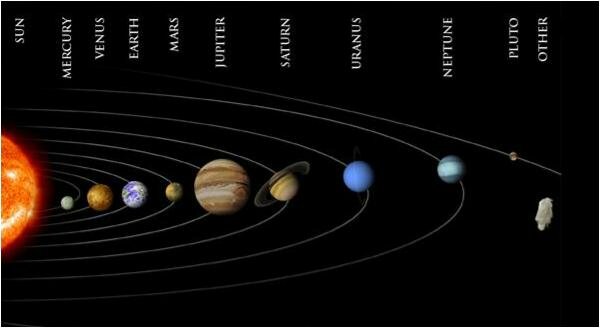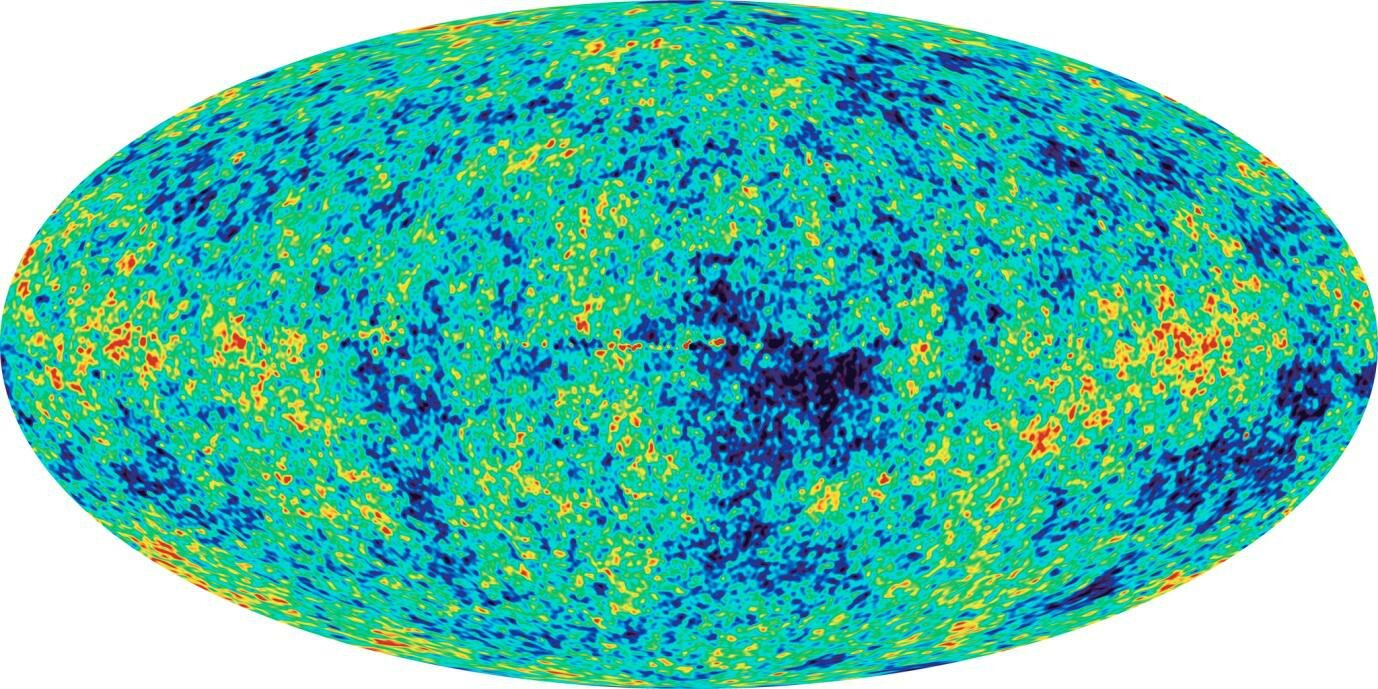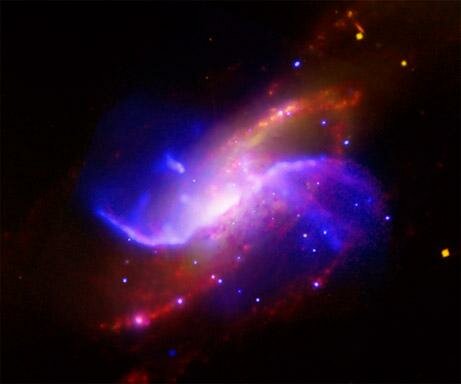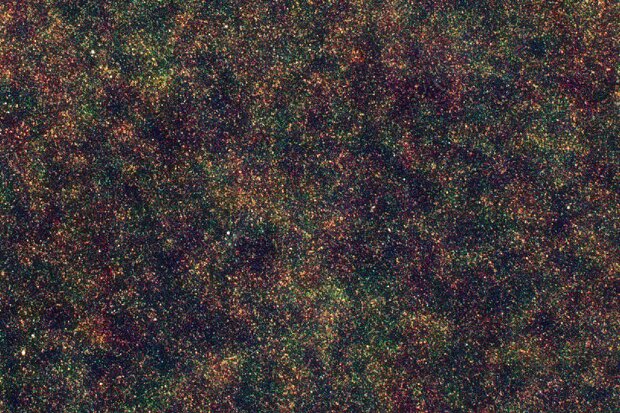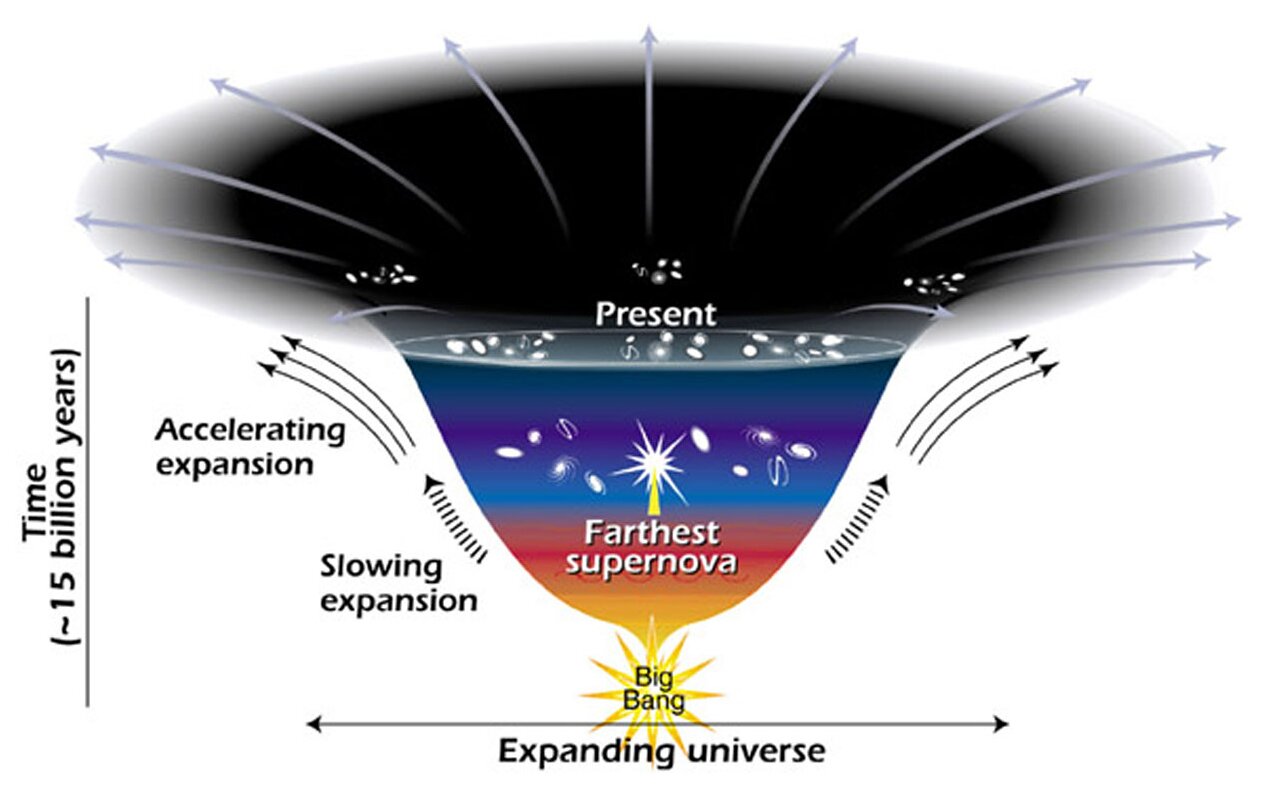Top 10 Fascinating Concepts Of Cosmology
Suggested by SMSIn creating a list of fascinating concepts of cosmology, it is important to maintain a sense of context. The fascination factor of an idea can be relevant to the ideas and beliefs of the time. On this basis, some concepts that may appear bland today must be viewed in terms of their contemporary ideology.
That’s not to say the ancients’ fascination with grouping half a dozen stars together and claiming that they were a perfect representation of a duck in the process of breaking into flight is likely to make this list. While this was no doubt fun, it was never really ground breaking, even if it was a scorpion or a goat rather than a duck. So the following list is intended to reflect the top ten concepts, from tenth to most fascinating, in the world of cosmology.
10. Distance, Light and Time
Few concepts engage and fascinate as much as that of time travel. The game of dinner parties, “What person from history would you like to meet?” is based on our desire to know more about the events that shaped our history and our world. So when the universe offers the opportunity to view its life, the growth and decay of the world, there are no doubt scientists skipping the dinner party and huddling around their telescopes.
When we observe a star in the process of supernovae in the distant reaches of our galaxy, we can be excused for forgetting that the event actually happened thousands of years ago. Simply by the nature of light and distance, we could be watching something that has taken the whole life of our species to reach us.
Similarly, in another part of the sky, a star is in the prime of its life. It can be studied for its composition, mass and the objects that orbit it. We can note similarities to our Sun and recognize differences that may provide a guide to the future of our world.
This living timeline is the product of the distances of our universe. It offers insights into the events that created our galaxy, solar system, Sun and planet; we can ask the questions of the specific moments in history that our world has probably experienced or may well be going to experience in the future.
As unsophisticated and seemingly obvious as this concept is to cosmology, there is no doubt that the simple observational qualities of the space-time reality still holds magic.
9. Spaghettification
A phenomenon that readily captures the imagination and everything that comes near it is the Black Hole. Described as a theoretical region with a gravitational pull so strong that even light can’t escape it, a Black Hole is believed to be exceptionally dense and creates the perfect “disaster” scenario for science fiction movies.
Probably more fascinating than the idea of being crushed out of existence by the gravitational force of a Black Hole is the process by which one is “sucked” into the hole. This concept is colorfully named spaghettification and even the word creates captivating images.
The expectation of the theory is that the nearest parts of the object would be pulled into the Black Hole significantly faster than the parts further away. This would cause the object to be broken into two even parts. These two parts would similarly be broken into two parts, quickly making four parts and the process would continue until all the particles of the object would be in a single line the width of an atom.
This would happen extremely quickly and, although the Black Hole would not wait for all the particles to be arranged neatly, in this linear form the object would progress into the Black Hole like a long piece of cylindrical pasta.
8. Wormholes
Wormholes are the stuff of science fiction and Lewis Carroll; they promise magical journeys through time and to other worlds. Technically, a Wormhole is any structure connecting two regions that are naturally unrelated.
In its own right, the concept is wonderfully intriguing, but perhaps the most enticing aspect of Wormholes is the number of respected physicists and mathematicians that have invested time in constructing models that would make them viable. Einstein and Rosen worked to devise a relativistic solution to the Wormholes scenario. They seemed to connect from the middle of a Black Hole to a parallel universe.
Similarly, Roy Kerr produced a theory that addressed the nature of Black Holes as rings rather a single point. In this configuration they could be approached from directly in front safely, but approaching from a side would make the traveler susceptible to the overwhelming gravitational pressure of the Black Hole.
Others including Stephen Hawking and, probably, Gene Roddenberry have developed theories to handle the complexities of the Wormholes. Yet almost everyone who has bought into the topic has done so because the thought of a fast lane to distant regions of this universe, another universe or a different moment in time altogether is fundamentally fascinating.
7. The Big Bang Theory
The name of this theory, while accurately descriptive and very catchy, has a tendency to distract from the sophistication and awe that should accompany it. All too easily, one can forget that this is a theory for the beginning of time; not the beginning of life on our planet, but the moment when all things began.
When Fred Hoyle attached the name “Big Bang” to the theory, even he grimaced, but the theory itself had been fluttering around for some time. Fundamentally it suggests that all matter, energy and cosmic stuff were originally compressed into a tiny, hot and very dense ball between twelve and fifteen billion years ago.
Then an event that is best described as a massive explosion sent universe expanding in all directions. As it began to cool and decelerate, neutrons and protons began to form. In time, a matter of seconds, electrons were formed and the first simple elements were created by the combining of these particles.
Hydrogen and helium emerged, but there was no “matter” as we know it for about a hundred thousand years. Another 200 million years and primordial gases began to form galaxies and the odd star. In time, our Sun was born and is now estimated to be between 4.5 and 4.6 billion years old.
As a creation story, the Big Bang is as good as many being revered by religious communities all over the world. However, it does have the added advantage of fitting in to many other theories and observations that have far more trouble matching up with the seven days after “Let there be light” or the four gnomes, each holding up a corner of the sky.
One such concept is that of the expanding universe, which deserves to be discussed in its own right as another fascinating concept of cosmology.
6. A Heliocentric Universe
In a world where religion was the guiding force for society’s morality, their military and their laws, the introduction of a concept that moved man from the center of the universe was either fascinating or terrifying. At its first noted inception Aristarchus of Samos (310B.C.E. to 230B.C.E.) the idea was dismissed without much fanfare. The Greeks, while interested in the cosmos, found this thought more fanciful than the square-headed dolphin constellation someone had tried to name and returned to the safe principle that everything revolved around them.
But when Copernicus raised the idea somewhere between 1510 and 1514 C.E., he had more scientific data to on which to draw and an audience that was a little more open to the notion. More so than Galileo, when he tried to present the same theory in Italy, 1611 to 1624 C.E. . There the division between fascinating and terrifying was more like a chasm that reached all the way to hell.
Almost as fascinating as the concept was the reaction that followed. In an act that was far more about politics and pride, the Church forced Galileo to recant his findings and the whole heliocentric theory. As horrific and ignorant as this response was, there was no way it could succeed for long and soon the world was awoken to the fact that the Earth and all the planets of our solar system move around the Sun.
This began the thinking, observing and dreaming that would allow man to come to grips with the physical world in a way that would open the way to flight, physics and the future.
5. WIMPs and MACHOs
The discussion of Wimps and Machos sounds more like a comedian recounting a visit to a gym frequented by astrophysicists than theoretical discussion of the nature of Dark Matter. However, Weakly Interacting Massive Particles and Massive Astrophysical Compact Halo Objects are both suggested elements of the elusive and mysterious Dark Matter.
WIMPs are subatomic particles that are distinctive because their interaction is significantly weaker than the particles of ordinary matter. This gives them the ability to pass through ordinary without any effect. Theoretically they may be passing through you right now and you don’t even feel a tickle. Although WIMP is an acronym for Weakly Interacting Massive Particles, the “Massive” part of the title simply reflects that they do possess mass, which makes them capable of causing the gravitational affects that original led to Ort’s hypothesizing the existence of Dark Matter.
MACHOs are, as the name suggests, Massive Astrophysical Compact Halo Objects. This includes objects that can be as large as super massive black holes or as little as small stars. Consisting of ordinary matters, the stuff of atoms that we learnt about in High School, they are the compacted end of supernovae and can be from slightly less than one and a half to triple the size of our Sun.
While both WIMPs and MACHOs are valid theories for the constituents of Dark Matter, there are strong arguments for the accuracy or otherwise of these. But, WIMPs particularly do present further opportunities for research and discovery, especially in the realm of subatomic particles.
4. Cosmic Microwave Background
Cosmic Microwave Background is a radiation that exists throughout the universe. Although we expect that the space between stars and galaxies is void of light, it has been discovered that, with a radio telescope a faint background glow can be perceived that is uniform in all directions. Even more fascinating is that it is not the product of any star, galaxy or even dark matter; in fact, it is the product of the Big Bang itself.
This radiation, which shows up most prominently in the Microwave section of the radio spectrum, was discovered by two scientists, Arno Penzias and Robert Woodrow Wilson, who were using apparatus designed for satellite communication. Unfortunately, they thought, their work was being interfered with by a radio noise that they couldn’t explain. It was weak, coming at them from every direction, and they could only imagine that it was being produced on Earth.
However, after addressing all the possible interference that they could contemplate, including removing a pigeon nest from the antenna, they realized that this noise was extraterrestrial. They also came to an understanding that this Cosmic Microwave Background was not only being recognized by their equipment. In time they even found that between 1% and 2% of the “snow” of an old black and white analog television set that was tuned between the designated channels was actually Cosmic Microwave Background being recognized by the instrument.
Through there further work on this concept, Penzias and Wilson were able to determine, among other things, that the universe was in general terms, flat. That is, within the means and methods available to us, the universe is effectively linear.
Isaac Asimov once reflected that “The most exciting phrase to hear in science, …, is not “Eureka!” but “That’s funny …” ”. This was basically the situation when Penzias and Wilson were drawn to deal with a persistent and probably annoying noise in their work. In the long run, Cosmic Microwave Background earned Penzias and Wilson a Nobel Prize and the concept of an all pervading radiation that has been present since the first moment of the universe remains astounding.
3. Dark Energy
With the puzzle that plagued Newton and Einstein resolved and, in that, the comfort that the universe was not about to collapse in on itself, it seemed that we could relax in the understanding that the universe was expanding. Logically, we could assume that, with Einstein’s theory of gravity firmly in hand, this expansion would gradually be slowing.
Then, in 1989, the Hubble Space Telescope, made an observation that unsettled our comfortable, slightly complacent, state. A supernova, so far away that it could be used as a reference for the behavior of the universe in the long distant past, indicated that the universe was expanding more slowly in the long distant past than it is today. That it, the universe, is expanding faster now than in the past.
Among the many questions that this observation threw at scientists, one of the most pressing was, “What’s driving this accelerating expansion?”
The name given to this phenomenon is Dark Energy.
Einstein had come to the realization that space is not a state of nothingness. He had recognized that it had properties that needed to be understood, including its ability to create more space. One of his theories of gravity, the one he labeled his “greatest blunder”, had actually made the prediction that “empty space” had its own energy. As a property of space this energy would not deteriorate with time or expansion, in fact, the more space that was created, the more energy of this form would also be created.
Another theory is that Dark Energy is that it is a fluid form of energy that has the opposite effect of matter and the energy that we think we understand. This has been called “Quintessence”, but this explanation has little purpose as no-one actually knows what it does, how it works, in fact, all that is known is that it has a cool name.
A further theory is that Einstein was wrong. That is, his theory of gravity does not fit the expansion of the universe. While this option can’t be discounted, at present there is no satisfactory explanation of gravity that comes close to doing the job as well.
While little is really understood about Dark Energy, as a concept it has the potential to change our perspective of physics and the universe.
2. Dark Matter
It always seemed reasonable to accept that, between the planets, stars, comets and other astral bodies we could see there was nothing. It was simple and a little fascinating in its own right, that there was a place where there was a complete absence of anything at all. Then someone had to spoil it and discover Dark Matter.
The concept of Dark Matter sprang into the mind of scientists like Jan Ort in 1932 as he pondered the gravitational effect observed on stars in the Milky Way. There was no visible or explicable body or force that would dictate the paths of these bodies and he considered that there may be something unseen, but very present that was acting on them.
In 1933, Fritz Zwicky was intrigued by the difference between the visible mass of the universe, that is stars, planets, dust and other objects that can be observed, and the calculated mass of objects in the universe. It was estimated that about 25% of the universe should be matter, but there was far too little accountable which gave rise to the thought that there was some other invisible Dark Matter that was present but undetectable.
The sticking point to the Dark Matter that Ort and Zwicky were discussing was in its un-detectability. Named Dark because it wasn’t visible, it also defies suggestions of being clouds of normal matter as it fails to absorb radiation that would normally be captured by such clouds. Due to a lack gamma ray action that is normally associated with antimatter, this theory was discounted and it is not simply really big Black Holes because light would bend in the vicinity of such objects and this also isn’t characteristic of Dark Matter.
In fact, so little is actual known about Dark Matter that some theories run to possibility that the particles that constitute it are so unaffected by other energy and objects that they can pass through other bodies in the universe largely unnoticed. With a name that includes “Dark”, this phenomenon can begin to sound terribly sinister, but the reality is that Dark Matter has been part of the universe for millions of years and is simply another concept that needs to be investigated and understood.
1. Expanding Universe
Between Newton and Einstein there was a shared problem around the role of gravity in the universe. If the universe was finite and static, then the force of gravity associated with each body would eventually cause the universe to collapse. But this wasn’t happening.
The only solution that Einstein could offer that would fit into his theory of relativity was to make an assumption that the universe was static, but that there was a “cosmological constant” that was present in all calculations and kept the universe stable. In time, he would call this his “greatest blunder”.
Edwin Hubble, working at the Carnegie Observatories in Pasadena in 1929, recognized the presence of redshift in light traveling from distant galaxies. This is the effect of light that is reaching us from objects that are moving away from us. Due to the deceleration of the light, it “shifts” towards the red end of the spectrum.
Through studying the relative distances of certain stars in these galaxies and comparing these distances to the relevant redshift of the light from these stars, Hubble determined that the only feasible cause of his observations was that universe was actually expanding. This was the option that Einstein had considered, but discounted.
Hubble’s work produces the fascinating notion that, as we look to the skies and see constancy in the stars, as mariners have depended on the unwavering heavenly bodies for centuries, as cultures have established complex connections with reliable constellations, the reality is that the universe is constantly changing.
There are many, many other fascinating concepts in cosmology than those listed here. Some are exceptionally complex, others are historically significant and there are also many that hold a cultural significance.
The only certainty in discussing any cosmological concepts is that, before many of us will gain a confident understanding of them, a newer and even more amazing discovery will be made.

